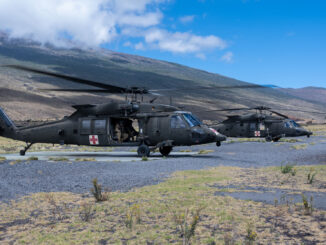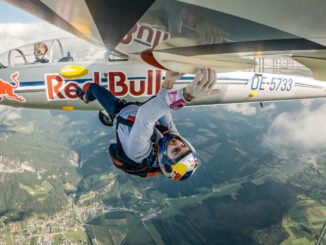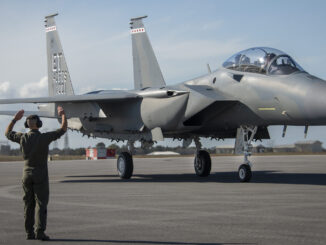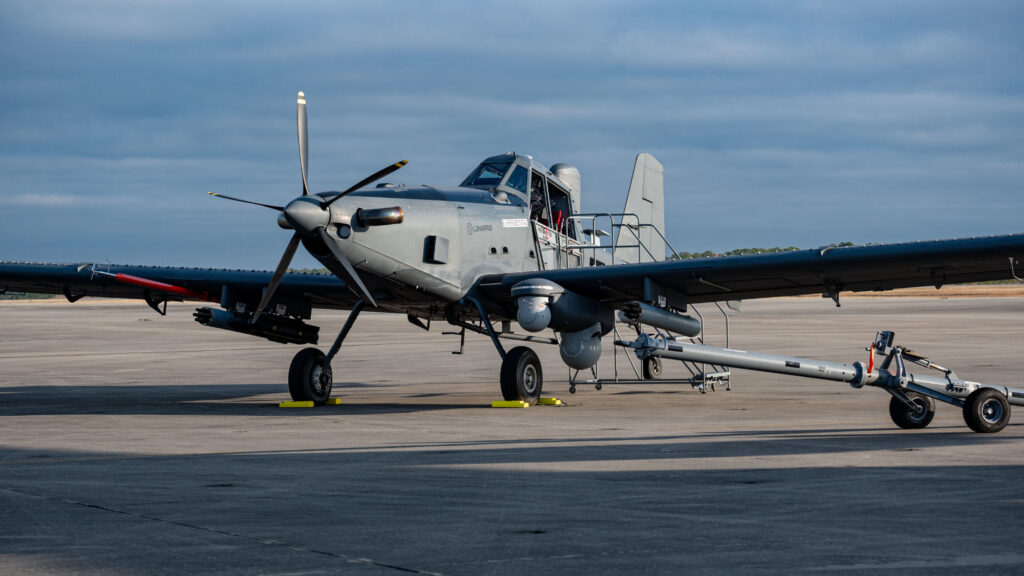 In the beginning of April 2025, the US Air Force Special Operations Command (AFSOC) announced on its website that the first OA-1K Skyraider II aircraft officially joined their fleet. The ceremony marking acceptance of the aeroplane into service was attended by the US Special Operations Command and AFSOC leadership, as well as elected officials and community leaders.
In the beginning of April 2025, the US Air Force Special Operations Command (AFSOC) announced on its website that the first OA-1K Skyraider II aircraft officially joined their fleet. The ceremony marking acceptance of the aeroplane into service was attended by the US Special Operations Command and AFSOC leadership, as well as elected officials and community leaders.
The OA-1K, also known by its corporate name AT-802U Sky Warden, is a light attack and armed reconnaissance aircraft developed by L3Harris and Air Tractor companies and based on the proven AT-802, agricultural and fire-fighting aeroplane.
On 1st August 2022, the AT-802N won a competition within the Armed Warden programme announced by the US Special Operations Command and aimed for ordering seventy-five aircraft as a replacement for U-28A Draco – the aeroplane often used in anti-insurgency missions which, however, is soon about to reach the end of its service life.
Following the programme premise, the aircraft was to be mainly capable of performing intelligence, surveillance, and reconnaissance (ISR) missions in remote areas, as well as providing close air support and making precision strikes, if necessary. In result, the Air Tractor and L3Harris companies were awarded a contract worth 3 billion USD for delivering seventy-five aircraft of this type until 2029. The contract included an upfront payment of 170 million USD, with the remaining amount to be paid as all the ordered aircraft are delivered.
The OA-1K aeroplanes, intended for AFSOC service, are built in two stages. The airframe is manufactured by the Air Tractor company in Olney, Texas. Then, the armour and weapons systems are added by L3Harris in its factory in Tulsa, Oklahoma.
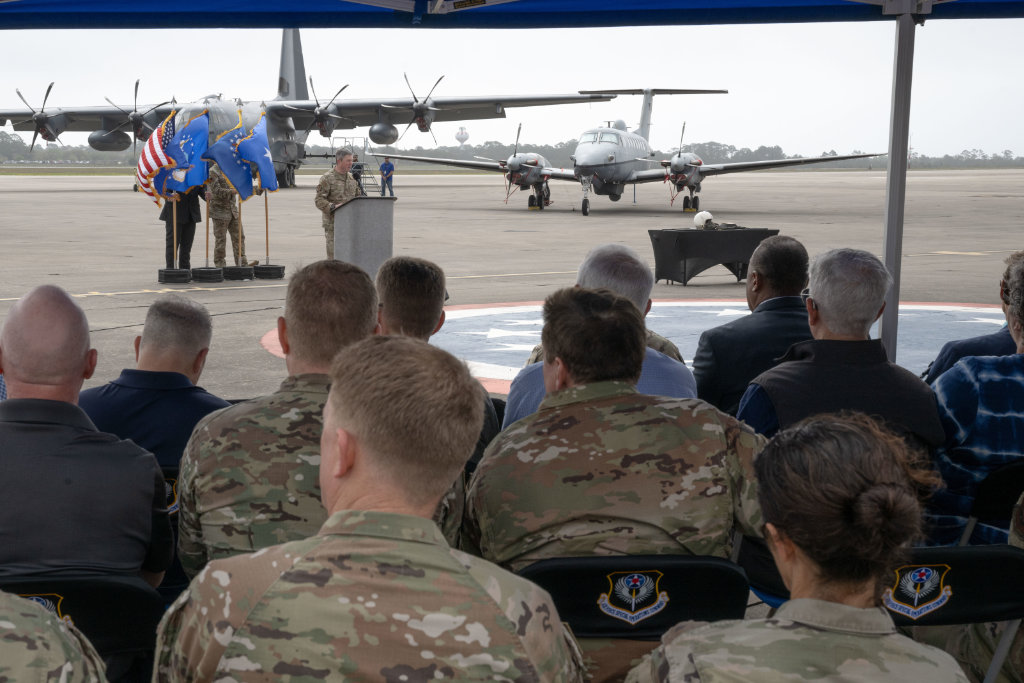
In late 2022, the AT-802U officially received its military designation – the OA-1K. Additionally, on 27th February 2025 the AFSOC unveiled the official name of the aircraft in the US Air Force service – the Skyraider II. Both the military designation and the naming make the aeroplane the modern successor to the well-known, rugged and versatile Douglas A-1 Skyraider carrier-based attack aircraft, which was in service from 1946 until the early 1980s.
On 15th December 2023, the Government Accountability Office released a report urging the Department of Defence to slow down the programme until the Special Operations Command could better justify the need for so many new aircraft. As a result, it was announced in September 2024 that the order had been reduced from seventy-five to sixty-two aircraft.
On 28th June 2024, two AT-802U Sky Warden aeroplanes, yet not modified by L3Harris, were delivered to Hurlburt Field Air Force Base (AFB) in Florida. On 8th July the test pilots and initial crews began training with the Sky Wardens prior the arrival of the OA-1K. On 29th July, one of the aircraft was transferred to Will Rogers Air National Guard Base in Oklahoma City with a similar purpose – to train the initial cadre of the 17th Special Operations Squadron, which was designated as the Formal Training Unit for the OA-1K crews.
On 3rd April 2025, the first mission-capable example of the OA-1K Skyraider II joined the AFSOC aircraft fleet. The event was was marked by the official ceremony held at Hurlburt Field AFB, mentioned at the beginning.
With the delivery of the OA-1K a new era in aeroplane modularity began. The Skyraider II allows its capabilities to be adapted to the required mission sets, such as close air support, precision strike or armed intelligence, surveillance and reconnaissance. Its versatility enables the AFSOC to respond to all requirements set by the US Secretary of Defense and the President of the United States.
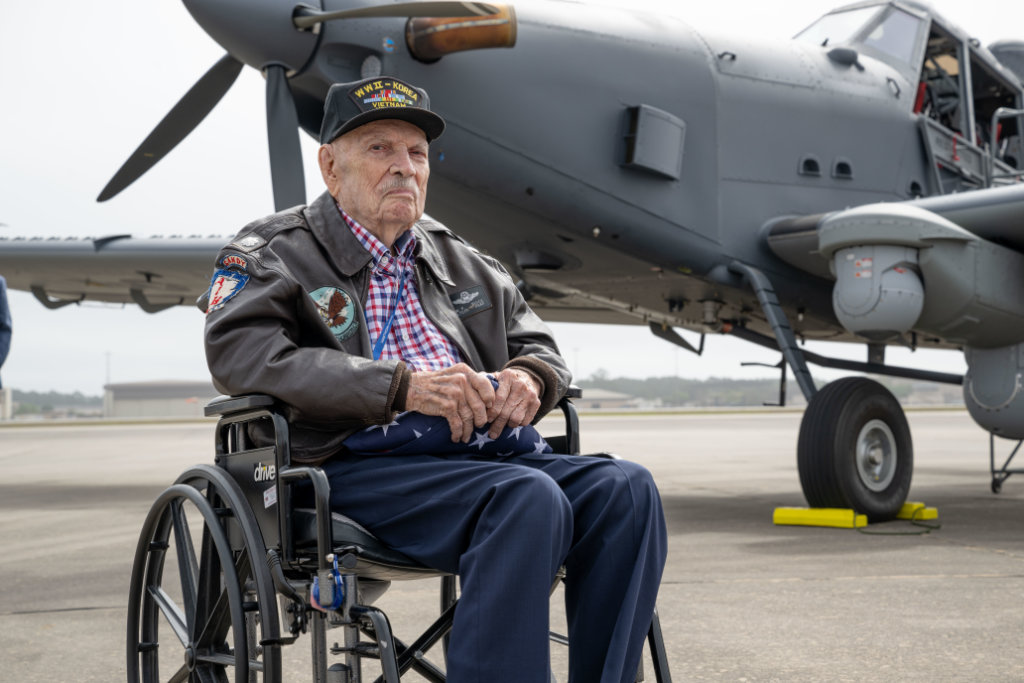
‘Skyraider II represents not just a new platform, but a modular solution to our national security needs. It will redefine how we approach joint campaigning, crisis response and the evolving landscape of modern warfare.’ – said the AFSOC commander, Lt. Gen. Michael Conley.
Based on the proven design of the AT-802 fire-fighting and agricultural aircraft, the OA-1K is a flexible platform that allows its operators to precisely adapt it to its mission and create dilemmas for adversaries across the spectrum of armed conflict.
‘This aircraft embodies the very essence of our command, it’s agile, it’s adaptable, and it’s always ready to deliver lethality. AFSOC exists to accomplish the missions others can’t do. The Skyraider II is a testament to that enduring promise.’ – added Conley.
Special guests at the Skyraider II delivery ceremony included 98-year-old retired Lieutenant Colonel Bill Buice, who flew the A-1 Skyraider during the Vietnam War from June 1967 to July 1968, and Mr Phillip Edward Jennings, who rescued Buice when he was shot down over Vietnam.
The story of Lt. Col. Buice’s survival is a living testament to resilience and versatility of the A-1 Skyraider, which now lives on the OA-1K Skyraider II.
‘Your ingenuity, courage and discipline of not only you, but your fellow Skyraider pilots, demonstrated why these missions are so critical to our partners on the ground. It is today’s Air Commandos who are now tasked to carry on that mission.’ – said commander of the AFSOC.
In the coming months, more OA-1K aircraft will be delivered to Will Rogers Air National Guard Base in Oklahoma, which is the official Skyraider II training facility.
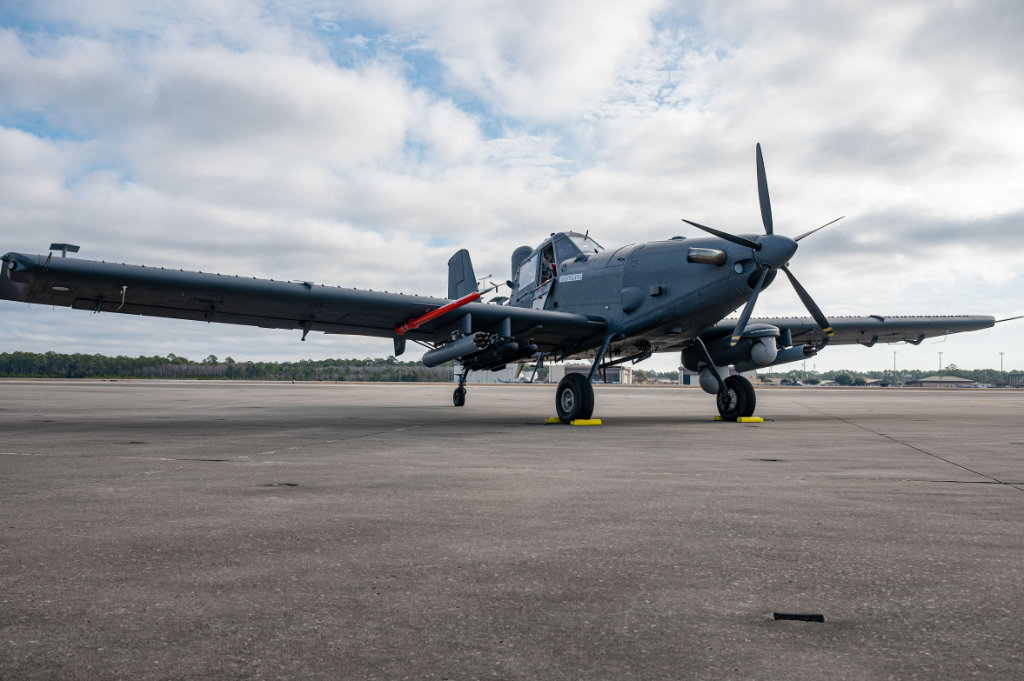
In conclusion, it is worth saying a little more about the aircraft itself, starting with a particular curiosity. In fact, several modified Air Tractor AT- 802 aeroplanes had already been used for years in Colombia to eradicate the cultivation of coca leaves, which are known to be used in the production of narcotics. The aircraft used in these operations were already fitted with a lightweight composite ballistic armoured engine compartment and cockpit, known as a ‘bathtub’.
Both the cockpit of the AT-802 and the OA-1K are not equipped with ejection seats. However, the structure of their cabin is made of steel tubes, thus creating a safety cage for the crew and is able to support the weight of the entire aircraft. Windscreen of the OA-1K cockpit has flat panels of ballistic glass for additional crew protection. The cabin of the Skyraider II is also equipped with an advanced electronic mission management system, as well as integrated avionics featuring, inter alia, Garmin 3000 flight and navigation interface and cockpit compatible with night vision goggles. The aircraft has landing gear in a classic tailwheel configuration, which is optimal for operating from rough and unpaved airstrips.
To deal with the threat from both infrared (IR) and radio frequency (RF) guided anti-aircraft missiles, the aeroplane is equipped with AAR-60 MWR 4X quadrant sensors and ALE-47 countermeasures dispensers on each wing. In addition, the Skyraider II also features self-sealing fuel tanks to prevent leakage in the event of a puncture.
Based on requirements and US export approvals, the aircraft can be armed with MX-15 and MX-20 laser designators, GB/PGM (GBU-12) bombs, AGM-114 Hellfire missiles as well as Powered Standoff Precision Guided Munition (SOPGM) and AGR-20 Advanced Precision Kill Weapon System (APKWS).
The Skyraider II is powered by a proven Pratt & Whitney Canada PT6 turboprop engine, a common powerplant for the whole AT-802 aircraft family.
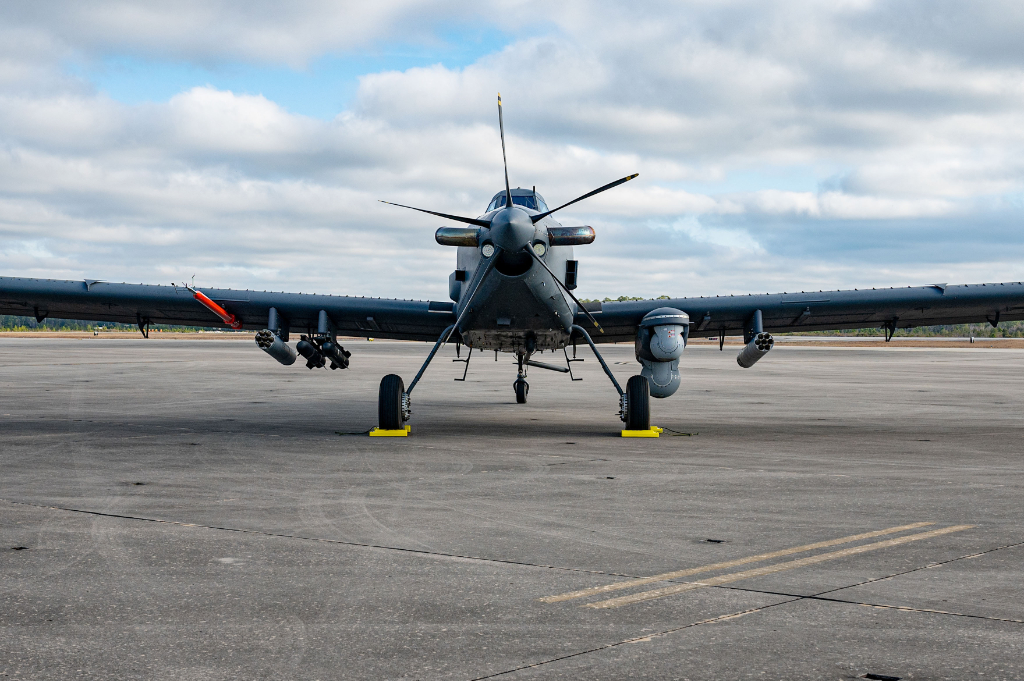
Cover photo: U.S. Air Force OA-1K Skyraider II is parked on the flightline at Hurlburt Field, Florida (U.S. Air Force photo by Staff Sgt. Natalie Fiorilli)
All photos and quotations © U.S. Department of Defence (DoD). DoD information materials were used, in compliance with Public Domain licence. The appearance of U.S. Department of Defense (DoD) visual information does not imply or constitute DoD endorsement. Additionally, information from Wikipedia and the L3Harris company official website were used in the article.

